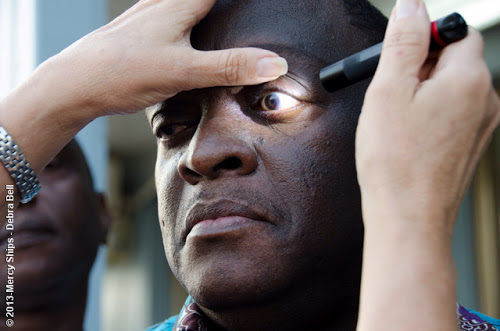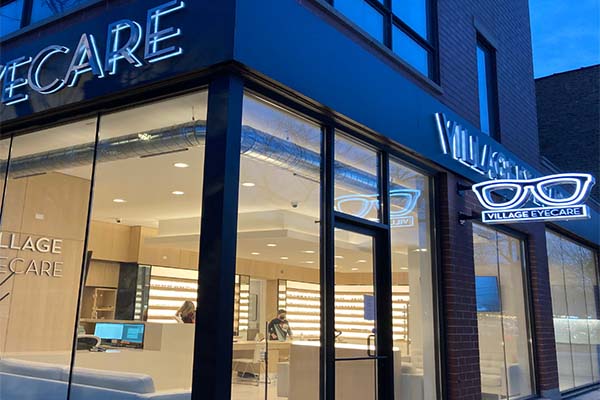Cardiologist Andalusia: Holistic Method to Heart and Eye Wellness
Cardiologist Andalusia: Holistic Method to Heart and Eye Wellness
Blog Article
Recognizing the Different Vision Improvement Procedures Available for Clearer View
In the world of vision adjustment procedures, a multitude of options exist to deal with refractive mistakes and supply individuals with more clear view. Allow's explore the details of these procedures and dropped light on the course to achieving enhanced vision clarity (Cardiologist Andalusia).
LASIK Surgical Procedure
LASIK surgical procedure is a typical refractive procedure used to deal with vision troubles such as farsightedness, nearsightedness, and astigmatism. This medical technique, which stands for Laser-Assisted in Situ Keratomileusis, intends to reshape the cornea to enhance exactly how light is focused on the retina, ultimately enhancing vision quality. Throughout the procedure, a slim flap is developed on the cornea, and a laser is utilized to eliminate exact quantities of tissue to improve it properly. This reshaping enables light to be properly concentrated onto the retina, fixing refractive errors.
Among the primary benefits of LASIK surgical treatment is the fast renovation in vision experienced by clients. Several people notice a substantial improvement in their eyesight immediately after the treatment. Additionally, most individuals report marginal pain and discomfort throughout the surgical procedure and recuperation period. The healing time for LASIK is fairly quick, with many people returning to their everyday activities within a day or more post-operation. Overall, LASIK surgery is a preferred selection for people seeking a long-lasting option for their vision problems.
PRK Procedure

PRK is an appropriate choice for individuals with thin corneas or those at a higher threat of eye injuries, as it does not include creating a corneal flap. The healing procedure for PRK is a little longer compared to LASIK, as the epithelium requires time to regrow. People might experience pain and blurred vision for a couple of days following the treatment.
Despite the longer healing time, PRK can generate excellent cause vision enhancement, making it a valuable alternative for those that might not appropriate candidates for LASIK surgery. - Cardiologist Andalusia
Implantable Lenses
In comparison to PRK where the cornea is improved directly, implantable lenses use an additional technique for remedying vision by inserting fabricated lenses inside the eye. This treatment is especially advantageous for people with high levels of nearsightedness, farsightedness, or astigmatism who may not be suitable prospects for laser surgeries like LASIK or PRK.
Implantable lenses, additionally referred to as phakic see this intraocular lenses, job by supplementing the eye's natural lens with an artificial one. These lenses can be put in front of the natural lens (former chamber) or behind the iris and before the all-natural lens (posterior chamber) By readjusting the power and positioning of these lenses, eye doctors can effectively correct refractive errors and improve aesthetic skill.
One advantage of implantable lenses is that they are removable and exchangeable, giving versatility for future changes. However, as with any type of surgery, there are threats involved, such as infection or cataract development. People taking into consideration implantable lenses must speak with an eye treatment specialist to figure out the most appropriate choice based on their individual needs and eye health and wellness.
Corneal Rings

The treatment for putting corneal rings is minimally invasive and reasonably quick, commonly performed as an outpatient treatment. During the surgery, the eye doctor makes a little incision in the cornea and inserts the rings at a certain depth. When in place, the rings help to improve the cornea, offering a smoother surface for light to enter the eye, which can lead to clearer vision.
Corneal rings are taken into consideration a relatively easy to fix procedure, as they can be eliminated or replaced if necessary. While they may not totally eliminate the requirement for glasses or get in touch with lenses, corneal rings can significantly boost vision high quality and general aesthetic comfort for individuals with keratoconus or various other corneal irregularities.
Refractive Lens Exchange
Following the modification of corneal abnormalities with procedures like corneal rings, an additional vision adjustment method that can address refractive errors is Refractive Lens Exchange (RLE) RLE is a surgical procedure that entails changing the eye's natural lens with a man-made intraocular lens important site (IOL) to fix refractive mistakes such as farsightedness, presbyopia, and nearsightedness. This procedure is specifically valuable for individuals who may not be suitable prospects for treatments like LASIK or PRK due to factors such as slim corneas or high refractive mistakes.
RLE is akin to cataract surgery, as both include getting rid of the eye's all-natural lens; nevertheless, in RLE, the lens is clear, not gloomy as in cataracts. The synthetic lens dental implanted during RLE can be customized to deal with the individual's specific refractive mistake, supplying clear vision at numerous distances. Recuperation time for RLE is relatively quick, and clients can expect better vision quickly after the treatment. As with any kind of procedure, prospective threats and difficulties exist, so a complete consultation with an eye care professional is important to figure out if RLE is the appropriate vision adjustment option.
Final Thought

In the world of vision correction procedures, a plethora of choices exist to resolve refractive errors and supply individuals with more clear view.LASIK surgical procedure is a typical refractive treatment used to deal with vision problems such as nearsightedness, farsightedness, and astigmatism.While likewise an usual refractive treatment, the PRK (Photorefractive Keratectomy) strategy differs from LASIK surgery in its technique to remedying vision troubles.Complying with the improvement of corneal abnormalities with treatments like corneal rings, one more vision improvement technique that can deal with refractive errors is Refractive Lens Exchange (RLE) LASIK surgery, PRK procedure, implantable lenses, corneal rings, and refractive lens exchange are all options that can resolve various vision problems.
Report this page